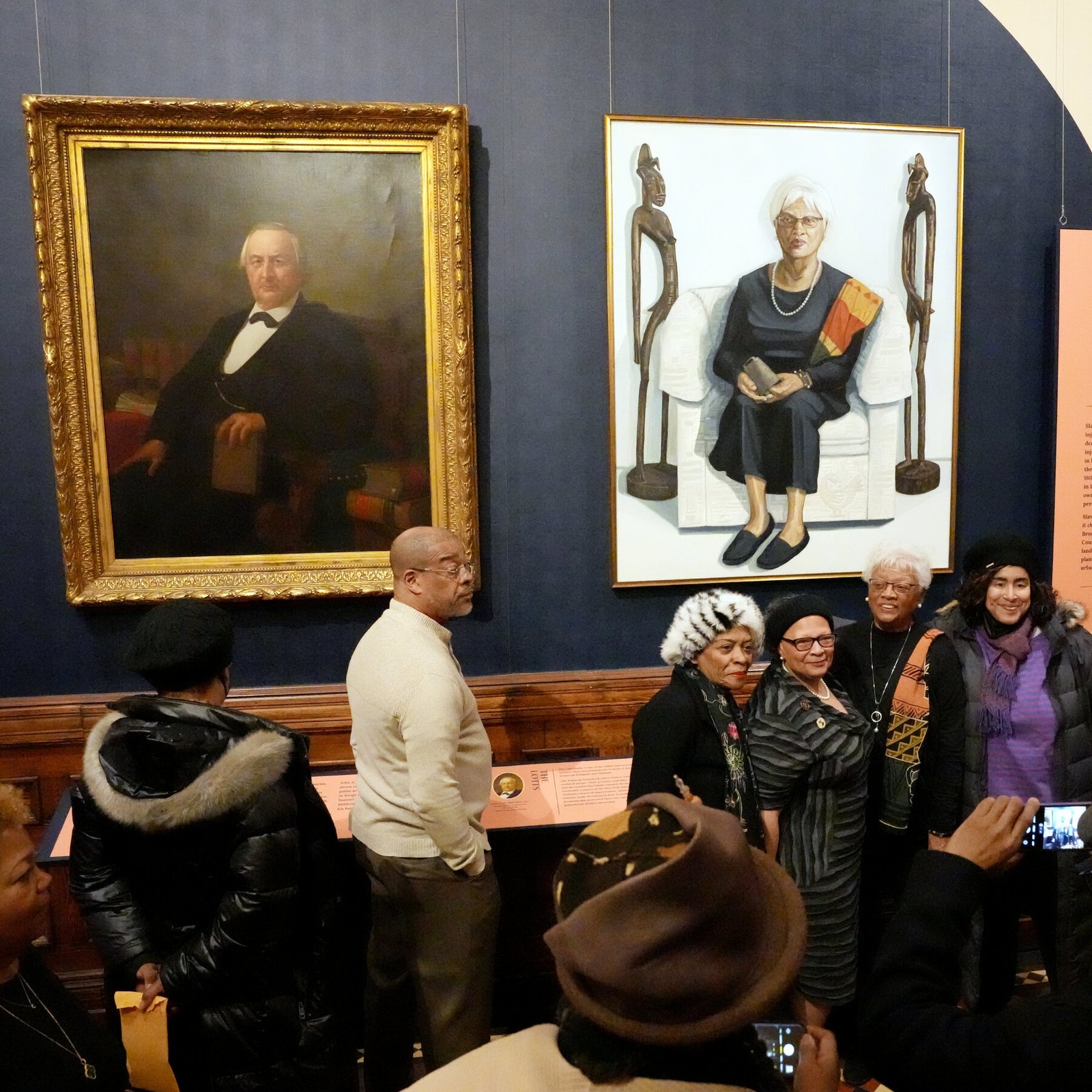“Trace/s,” an exhibition at the Center for Brooklyn History, highlights the borough’s neglected story of slavery — and the Black genealogists helping to unearth it.
“Trace/s,” an exhibition at the Center for Brooklyn History, highlights the borough’s neglected story of slavery — and the Black genealogists helping to unearth it.
“Trace/s,” an exhibition at the Center for Brooklyn History, highlights the borough’s neglected story of slavery — and the Black genealogists helping to unearth it.
Come to the Center for Brooklyn History’s grand Romanesque Revival building in Brooklyn Heights looking for staid portraits of 19th-century burghers, and you’ll find them.
But on a recent evening, Mildred Jones, an 87-year-old retired schoolteacher born in Bedford-Stuyvesant, was pondering a less expected large-scale oil portrait — of herself.
It was hanging alongside the image of John A. Lott, a prominent judge whose family had enslaved her great-great-grandfather Samuel Anderson. Her thoughts on the likeness? Jones paused, looking a bit sheepish, then smiled.
“I just love the whole idea,” she said. “It has opened up a whole new set of information and possibilities for telling the story of Black folks in Brooklyn. We’ve been here a long time. And it’s a story that needs to be told.”
The twinned portraits of Lott and Jones are the anchors of “Trace/s: Family History Research and the Legacy of Slavery in Brooklyn,” a new exhibition looking at the borough’s long-neglected history of slavery — and the work ordinary people have done to help recover it.
The show, on view until August, draws on fresh research in the collections amassed at the center (formerly the Brooklyn Historical Society) since its founding in 1863 by men like Lott. But it also builds on the dogged efforts of amateur genealogists and family historians to track down people whose lives may have been only fleetingly recorded.
Discover more from World Byte News
Subscribe to get the latest posts sent to your email.


